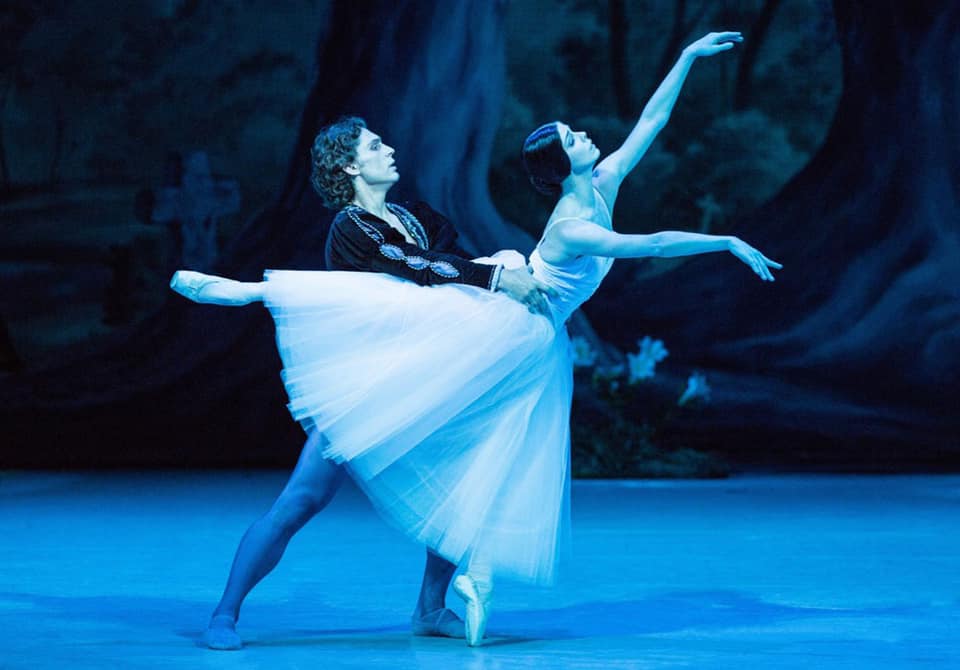In part one of an interview with the artist, writer Ismail Fayed asked Mansour about dance and identity, her background in cinema, what moves her and her many collaborations.
Karima Mansour: I find this question a very loaded question. I feel that within it there is a sort of statement. I don't necessarily approve of being framed as a particular subject. It is very easy to frame someone as something or the other. It is not that I am surprised that it happens, but it is very easy to think like that. There is always a certain image, especially when it comes to spectators and the “outside world,” and it’s easy to settle for that image (female, Muslim, Egyptian, etc). These are all frames that can be used, abused, and misused.
The fact that I am aware of it does not mean that it affects my work or that I use it. I try to be aware of it, especially because I am busy with the body in a context that does not seem to help that.
I am going to try to simplify it and I hope you understand. I think arrogance and false modesty are two sides of the same coin.
I don't cater to that idea that I am a particular subject, even if it is simply true and something I have no hand in. It does not affect my work. My work is what it is and will continue regardless of what frames of subjectivity I am in.
At the same time, I don't pretend that it is not there because if I do, I will not be doing my part in being aware of the social or political situation, the audience and the context. When I am performing I am very aware of the different readings that spectators have and how that changes with each context of where I perform, but the work doesn’t change.
In regards to institutions or festivals–I was never in a position where my subjectivity was the main frame through which my work was presented. When I perform or am invited to collaborate, it is with people who have seen my previous work, and based on that they choose to collaborate.
There a few festivals, let’s not generalize, that have a very clear frame (i.e. dance from Africa, Middle East, works by female artists, etc). I do participate at times in these festivals.
Festivals are a way to show my work, make my work visible; they are opportunities to perform, to test my work. As long as it does not go beyond my principles or violate them, I have no problem performing and letting the audience decide for themselves at the end of the day.
Another point is, Why I should keep apologizing for being one subject or the other, i.e. a woman artist from the Middle East, if that in itself is a complex and very real situation that should not be undermined but respected and encouraged.
I myself have worked with dancers from other countries, like Cote d’Ivoire. It was interesting trying to delve into and research a different physicality. I chose to work with a very strong and accomplished artist, Beatrice Kombe, and it worked in a different direction: how we can communicate through different languages.
If, as you ask, I had problems with institutions, it’s most probably that these institutions dictated the kind of work I should do.
People sometimes, especially in the West, ask, “Why are you busy with contemporary dance?” which I think is interference in my artistic choices.
It acts as an expectation someone has for me, expecting me to play with particular themes (i.e. belly dance, folklore, Sufi physicality, zar) and develop these exotic approaches which I might like seeing but do not necessarily want to work with at the moment, not out of stubbornness, because maybe some time in the future I will explore these themes, but I would do that without thinking that this “too Egyptian” or “too foreign” or that would sell more in the West or not.
I do not avoid it or go to it; I sort of let it be. I let my topic of work decide. I am convinced, without trying, it is already there in my physicality, and it’s the historical baggage that is present even when I am on stage. It is this information that sometimes hinders how the audience perceives you and your work. It hinges on how much baggage the spectator has, what preconceived notions they have about the artist.
I like to work and play with expectations of the audience and the artist. Everyone is inspired differently; my inspiration from my “culture” is subtler. I don't need to have a label or a flag on my work. We can all question the definition of an Egyptian identity, and if we ask 50 Egyptians, you will get 50 different answers and 50 different identities. I think identity is a very personal and cumulative process. We live in an open world, you travel, you see different things. There is education and experiences that make getting influenced by the outside world inevitable and we should embrace and learn from that and not push it away.
Having said that, one should not copy things from the West. I don't avoid or resist. I don't want to copy Western material, nor try to be "authentic" either. I am trying to find my own appropriate language.
Al-Masry: You have a background in cinema, a B.A. from the Film Institute. How do you visually relate that to choreography? Does it give you an advantage in creating a “frame”? Do you pay close attention to the “cinematographic” potential of certain pieces?
Mansour: It has definitely influenced the way I work. It’s interesting that I was not able to study dance academically right away even though I had started dance at the age of 5.
I always thought that the amount of time I spent studying film was a waste. If things were different I would have been able to leave earlier, I would have had more time, I would have worked harder, etc. Only when I started doing my own work, I came to realize it was not such a waste of time.
The influence it has on me–I don't think I use consciously–is an innate thing in the way I work. It is not only the visuals, but also dramatic structure, how to build my scenario, the drama, how to connect all these elements; studying cinema helped that. Or how to make the work coherent without relying on other elements like speech or sound; if you take the sound away, the visuals should give you a story too.
Cinema helped me understand where the eye goes, how to use the stage, visually and dramatically, in an indirect way.
Al-Masry: How does artistic collaboration feature in your work? Specifically collaborating with Egyptians and non-Egyptians, how did that add to your creative process and did it or did it not alter something in the way you conceived and executed a piece?
Mansour: Define collaborations?
Al-Masry: Working with dancers as choreographer and working with other choreographers as a dancer.
Mansour: Working as a choreographer with dancers, I have had several experiences.
There was a piece in Dresden, where I stayed for two months. I was creating a piece for five German dancers; it was part of a festival in 2005. I worked with five highly-trained dancers–of course, this helped in the sense that as I was working there were very few obstacles. What I wanted to achieve and create, they made possible. As they were very well-trained, they got the interpretation, the digestion of the work was quick, and the process evolved quickly, which allowed for more creativity.
Another experience was a collaboration that I did in Egypt in 2001. I worked with a stick dancer from Upper Egypt, a ballet dancer, a circus performer and two actors. Only one person had a technical background in dance–the ballet dancer–and in that sense the project was very interesting process because of their diversity. I could not do all that I wanted to do; I was obliged to take alternative routes because of the technical limitations. The work was still mine but I had to use a different creative strategy.
I also collaborated with a choreographer from Portugal. We both created two solos that were performed on the same evening, one after the other, as part of a whole. Despite our collaboration, we did not end up with one piece “divided in two,” which is, for me, not a failure of the collaboration. I had my ideas and he had his; we tried to find a means of communication and found that was the best way was to put our meeting on stage. It became another kind of dialogue; it is quite a political piece. When you collaborate you have to know how to compromise. It’s about dialogue; it’s about finding a meeting point. If there is too much stubbornness, it will not allow for growth. It’s a very fine line.
The collaboration makes you grow, you expose yourself to others and their ideas and their questions and you do the same to the others. You question, you challenge, you see the same thing, if it is used properly.
The process forces you to question and questioning is good; a little doubt is always needed. Questioning can also confirm some ideas that you have, with this experience; you can also discover and confirm these ideas were correct as well as grow.
This particular experience I was already aware from the beginning, being an Egyptian female busy with the body in my context. It was not something that I thought about, this is what it is, this particular collaboration confronted me with reality how the West (I am not generalizing) views areas like ours, how we are perceived, this constant curiosity, and the question, Why are you busy with this art form in particular?
It is always good, if this process is used well, only if the two parties are equal (it can kill you as an artist if there is no equality). Otherwise you will not come out with something. It does not add anything to you unless you are working with someone on the same wavelength, at least, who can inspire you.
Working as a performer with other choreographers…The reason I see it that way is because of the fact that when I was in Europe doing dance during my last years in UK I was able to work with professional choreographers, but then I was not able to continue working because of all these issues of a work permit, etc and for quite a while, I was really sad. I felt I wanted to do more.
In the future, if I am convinced, I would do it because I don't see it as passive process; it is a different kind of active engagement, but it has to be someone as well as a subject I like and want to be part of.
Al-Masry: As an artist, what are you busy with? Conceptually, politically, personally, etc? In other words, what moves you?
Mansour: Injustice moves me, in one way or another; it creates commotion.
Beauty moves me. Ugliness and oppression, having to work within limitations, fighting for freedom of expression–all of this moves me.
Al-Masry: Did these interests and ideas change over time?
Mansour: Yes and no.
These interests, or ideas, that move or inspire are not easy to pinpoint. Some ideas become clear, some ideas you drop, and the core is more or less the same. It becomes deeper, hopefully deeper, and more mature with experience and time.
Expressing these ideas or concepts over time is not about repeating, not having dreams, not learning from mistakes; it is about what moves you as a human and the creative strategies you develop and that help you develop and mature.




